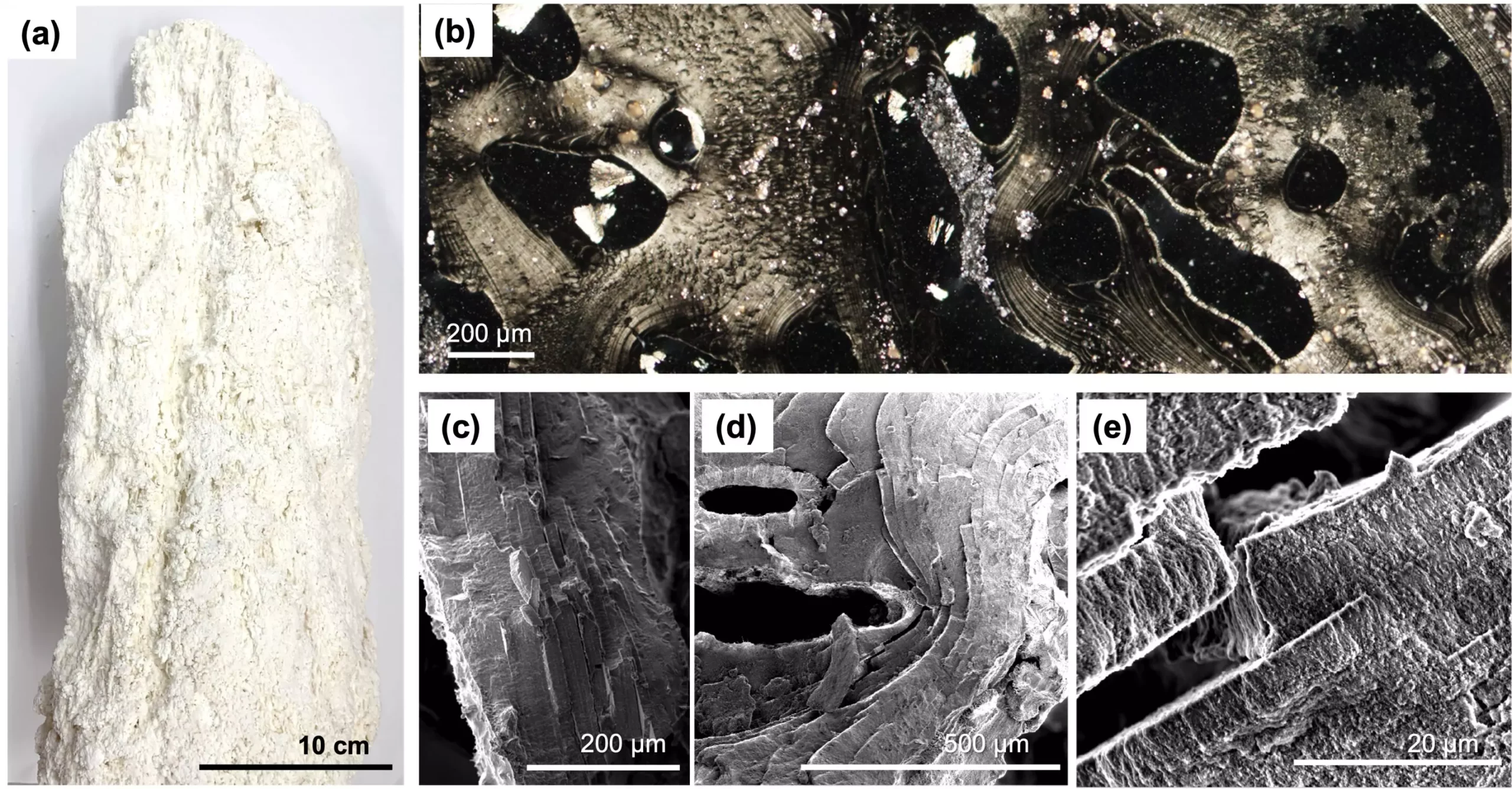Deep-ocean hydrothermal vents, often referred to as the Earth’s underwater volcanoes, are fascinating geological formations that hold a treasure trove of scientific secrets. Emerging from the ocean floor, these vents release hot mineral-rich water, a result of seawater seeping into the Earth’s crust and being heated by magma. This unique environment is not only a subject of geological interest but also a potential cradle for the origins of life, as the conditions found here are conducive to various biochemical processes. Recent research spearheaded by Ryuhei Nakamura and colleagues from the RIKEN Center for Sustainable Resource Science in Japan has unveiled astonishing parallels between these inorganic nanostructures and the fundamental components of life, reshaping our understanding of both life’s beginnings and potential sustainable energy sources.
Nakamura’s team focused on the structures that emerge in mineral precipitates around serpentinite-hosted hydrothermal vents, where a rich cocktail of metal oxides, hydroxides, and carbonates forms through complex chemical activity. These structures are not mere geological formations; they hold intricacies reminiscent of natural ion channels found in living organisms. The research reveals the possibility of abiotic osmotic energy conversion occurring within these inorganic matrices, challenging the long-held assumption that such processes are exclusively biological. These nanostructures, self-organized in nature, seem to exhibit selective ion transport capabilities akin to those seen in the cell membranes of living entities, making them essential to understanding life’s biochemical foundation.
The team conducted their research using samples retrieved from the Shinkai Seep Field in the Mariana Trench at an impressive depth of 5,743 meters. One particular sample comprised predominantly of brucite – a mineral known for its layered structure – was meticulously examined using advanced optical microscopy and micrometer-sized X-ray beam scans. Remarkably, the brucite crystals formed continuous nano-columns that acted as conduits for the vent fluids, allowing the researchers to observe electrical charges across their surfaces.
A breakthrough came when the researchers established conductance variations correlating to the concentration of potassium chloride. Their experiments demonstrated that, at higher concentrations, the conductance increased proportionately, while at lower concentrations, the behavior resulted in constant conductance governed by the local electrical charge. This finding drew parallels to voltage-gated ion channels in neurons, illuminating a potential biochemical mimicry that blurs the lines between inorganic systems and biological energy transduction.
The implications of this research extend far beyond the mere understanding of abiotic processes. The spontaneous formation of ion channels in these hydrothermal environments could offer insights into the conditions present during the earliest forms of life on Earth. As Nakamura succinctly articulated, the ability of these inorganic structures to facilitate osmosis—a fundamental process for biological energy conversion—strengthens the theory that hydrothermal vents may indeed have been the crucibles for life’s very genesis. The research lays the groundwork for re-evaluating the transition from geochemistry to biochemistry in the perspective of life’s origins, challenging the traditional narrative of a strictly biological emergence.
In addition to its contributions to our understanding of life’s origins, the findings have crucial implications for sustainable energy generation, particularly in the realm of blue-energy harvesting. This method leverages the salinity gradients found in coastal areas, generating electricity through the movement of ions. By emulating nature’s design showcased in these deep-sea structures, engineers and environmental scientists might enhance the efficiency of artificial systems aimed at osmotic energy conversion.
Nakamura’s research offers a glimpse into how we might learn from geological processes to improve energy generation. By understanding how nanopores and their inherent structures are formed in hydrothermal environments, we open pathways toward innovative synthetic techniques in engineering. Green energy solutions inspired by nature could provide sustainable alternatives in a world increasingly reliant on renewable resources, effectively merging geological insights with technological advancements.
The discovery of ion transport phenomena in deep-sea hydrothermal vents not only reshapes our comprehension of abiotic processes akin to biological functions but also highlights the broader implications for science and energy. As researchers continue to delve into the mysteries of hydrothermal vents, they may unlock further truths about life’s origins while simultaneously transforming the future of renewable energy. Through interdisciplinary collaboration, we stand on the brink of a new understanding that bridges geology, biology, and sustainability, promising exciting developments for both science and technology in the years to come.

